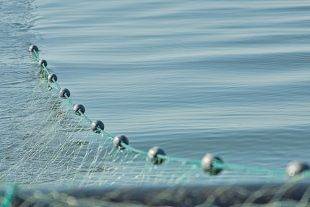Recently two campers were fined $619 on the spot and others cautioned after breaching a freshwater fishing ban designed to protect the critically endangered Mary River cod.
Fishing in southeast Queensland’s upper Mary River catchment and adjoining creeks was prohibited from August 1 until the end of October to safeguard Mary River cod during its breeding season.
The species has been pushed to near extinction in its natural habitat by decades of hunting and clearing on riverbanks.
Mary River Catchment Coordinating Committee project officer Brad Wedlock said the simple act of pulling a male cod from the water for a photograph at this time of year could have devastating consequences.
Mr Wedlock said male Mary River cod build nests, then guard and oxygenate the eggs.
If that area is fished and a male cod pulled away from protecting its nest, other predators such as tilapia can come in and eat the eggs.
“And then we just don’t get another spawning for this year, so one year goes without more Mary River cod fingerlings going into the river,” Mr Wedlock said.

Fisheries Queensland field officer Benjamin Akers said his department had stepped up its strategy this year by putting up “a series of public information signs around popular fishing holes on the upper Mary River area in the closed waters.”
The area was patrolled both on foot and via drone to monitor for any fishing activity.
The two campers fined were found with fishing gear past fishing ban signage on the upper Mary River.
The annual temporary fishing bans – upstream of its junction with Six Mile Creek near Gympie – also apply to Canungra and Guanaba creeks and parts of the Albert and Coomera rivers on the Gold Coast, plus the Stanley River above its Neurum Creek junction east of Woodford.
People are encouraged to download the Fisheries Queensland Smartphone App.
It will notify you of any closures, both of time and space, and it has a ‘Can I fish here?’ button, so it will use the GPS in your mobile device to locate you and say ‘Yes, you can fish here,’ or ‘No, these waters are currently closed.
Numbers of the Mary River cod tumbled to as low as 600 individuals in the wild in the 1980s.
Mary River cod need deep, cool and shaded pools with submerged logs for breeding.
They can be caught and kept with strict bag limits in some stocked dams, but they are a no-take species in the upper Mary River.

The MRCCC is working with the Burnett Mary River Group and Griffith University to assess stocks of the cod in the river.
Mr Wedlock said a long-term hatchery breeding program and decades of work to revegetate riverbanks had been successful in increasing numbers.
“Fingerlings that were released 20 years ago have transitioned into adults and now we’re picking them up as breeding adults,” Mr Wedlock said.
“We’ve only possibly got less than 1000 Mary River cod adults breeding in the Mary River – there’s not that many out there.
“Our ultimate aim is to have a population of Mary River cod that is not endangered anymore, to make it a common species.”
MRCCC chairman Ian Mackay encouraged fishers to abide by the temporary ban and said the future of the species “is in our hands.”
“I’ve watched two frog species become extinct out in the Conondale before we realised what was happening,” Mr Mackay said.
“I just really feel the onus of looking after these things is on us.”
A Fisheries Queensland spokesperson said that while people who were travelling could still carry fishing gear, it must be securely stowed out of sight and not used in closed areas during the three-month ban.
 Bush ‘n Beach Fishing Magazine Location reports & tips for fishing, boating, camping, kayaking, 4WDing in Queensland and Northern NSW
Bush ‘n Beach Fishing Magazine Location reports & tips for fishing, boating, camping, kayaking, 4WDing in Queensland and Northern NSW









